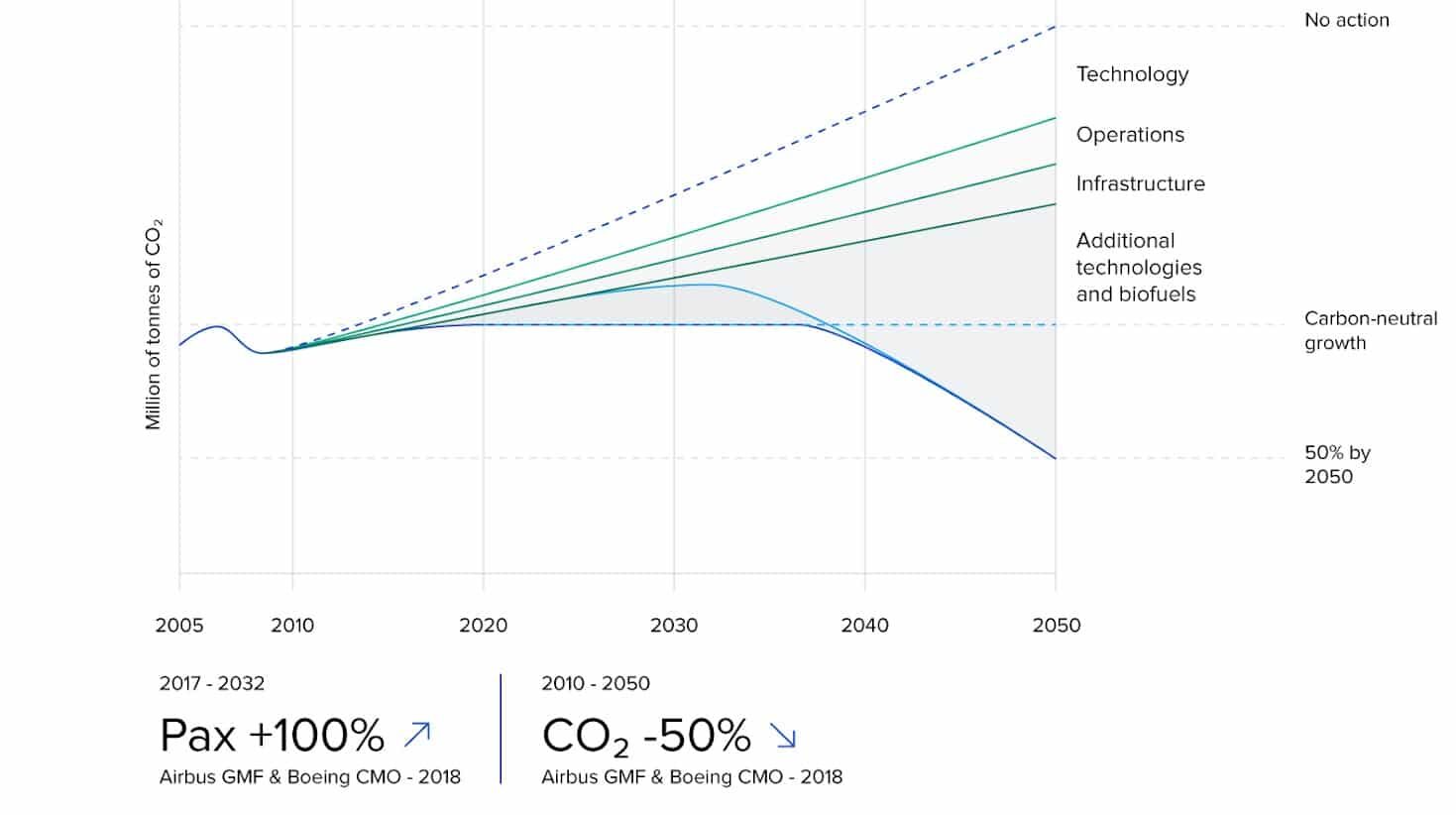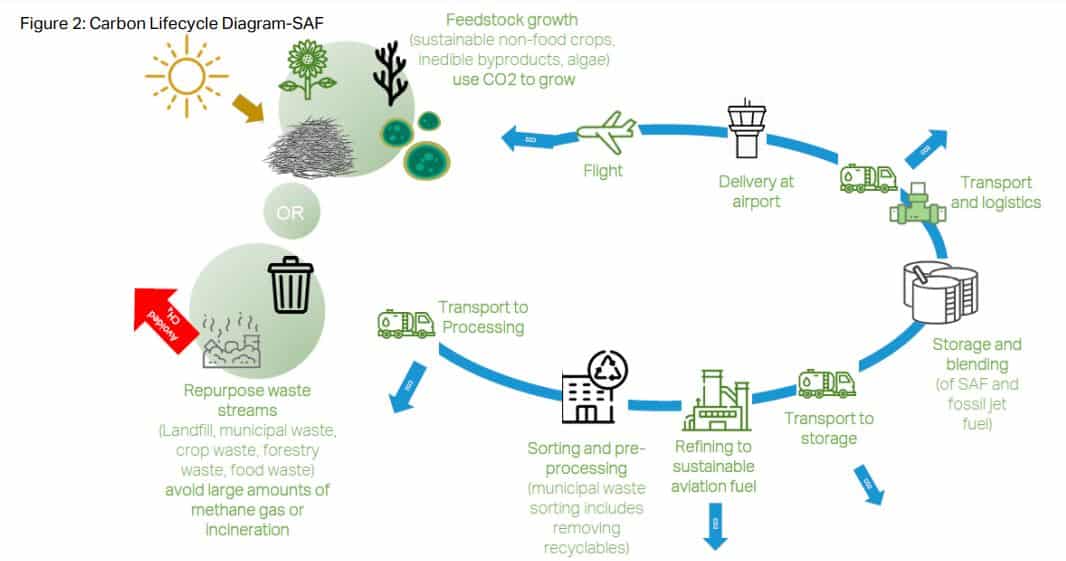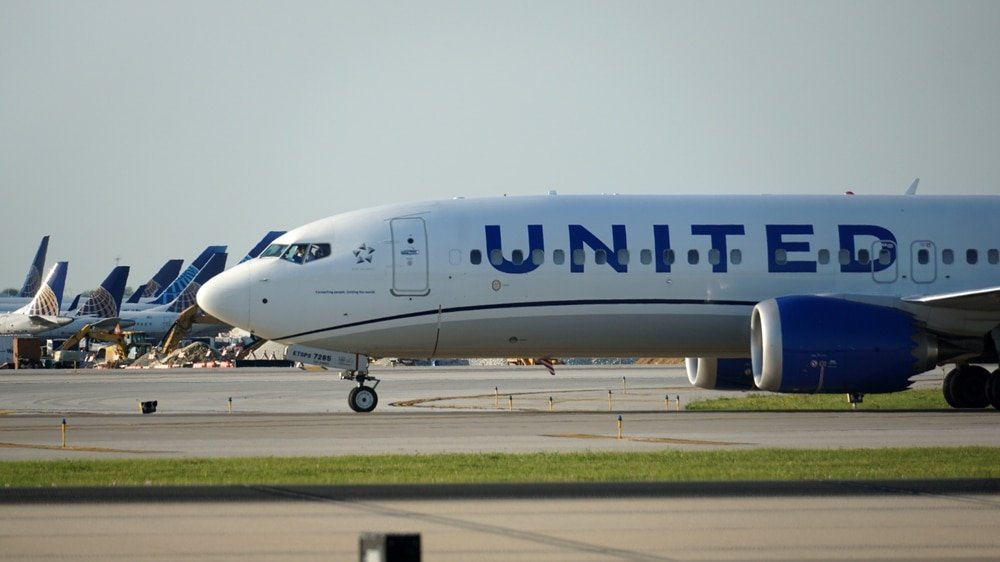United Airlines launched a first-of-its-kind investment vehicle with over $100 million to support startups focusing on cutting air travel’s carbon footprint by ramping up the research, production, and technologies of sustainable aviation fuel (SAF).
The airlines called the fund the United Airlines Ventures (UAV) Sustainable Flight Fund. Its initial investments of $100+ million came from JPMorgan Chase, GE Aerospace, Honeywell, Air Canada, and Boeing.
According to United CEO Scott Kirby:
“This fund is unique… we’re creating a system that drives investment to build a new industry around sustainable aviation fuel, essentially from scratch. That’s the only way we can actually decarbonize aviation.”
The International Air Transport Association (IATA) projected the following scenario by 2050 for global aviation emissions.

What is SAF?
SAF is an alternative to conventional jet fuel that reduces carbon emissions associated with air travel. It’s from used cooking oil and agricultural waste, but can also be made from other materials such as forest waste and household trash.
Implementing SAF can provide a beneficial strategy to process waste, while also reducing CO2 emissions in aviation.
Right now, SAF is blended with conventional fuel to comply with regulatory requirements for use within the aircraft. And to date, United Airlines has invested in the future production of more than 3 billion gallons of SAF. That’s the most among any airlines in the world.

Other airlines like EasyJet and JetBlue also see SAF as one way to achieving their climate goals. The IATA estimates show that SAF will account for around 65% of mitigation in the aviation industry.
- To date, about 500,000 commercial flights were powered by SAF.
Alongside SAF, most airlines consider carbon offset credits for their net zero strategies. And as per S&P estimates, airlines will rely on offsets to decarbonize about 97% of their operations by 2025. But as the industry strives to lower emissions internally, that reliance will be down to 8% by 2050.
The UAV Sustainable Flight Fund
Via the UAV Sustainable Flight Fund, large companies can invest in SAF technology and production startups that United identifies. UAV has invested in these low carbon tech companies such as ZeroAvia, Dimensional Energy, Heart Aerospace, and NEXT Renewable Fuels.
The Fund makes it possible for the first time for travelers to buy a ticket on the United website or app and supplement the airlines’ investment.
- The first 10,000 people who choose to contribute to the fund will each receive 500 MileagePlus Miles as a thank-you.
The Fund is also open to corporate investors across industries. It will prioritize investments in new tech, proven producers, and advanced fuel sources to scale the supply of SAF.
United has already made investments in or inked agreements with companies using various ingredients and tech to make SAF. These include inputs such as ethanol, animal byproducts, forestry and crop waste, and municipal waste. Novel technologies like synthetic biology and power to liquids are also being considered.
These existing SAF investments will form part of the UAV Sustainable Flight Fund portfolio. Fund partners will also get preferential access to environmental attributes associated with United’s supply of SAF.
Increasing Consumer Awareness and Action
By some estimates, air travel accounts for 3% to 4% of all carbon emissions in the US. The industry has its own carbon credit scheme CORSIA to spur carbon reductions.
So, United is raising passengers’ awareness about their flight’s carbon footprint while giving them the option to take action. As they search for their flights, United is also showing them an estimate of their air travel’s emissions.
A green shading in the traveler’s itinerary tells that they chose a lower-carbon option on a per economy seat basis.
- A flight’s carbon footprint is measured in kg CO2e (kilograms of CO2 equivalent)
The flyer’s emissions estimates may vary from their flight footprint. Several factors determine the estimation including:
- aircraft type,
- flying time,
- seat capacity, and
- number of people and cargo on a given flight.
Those who book a United flight travel within or from the US will see an option to contribute to supplement the airline’s investment in the UAV Sustainable Flight Fund before check-out. They can decide to contribute in various amounts – $1, $3.50 or $7.00. The default contribution option is set at $3.50.
To show the potential impact of customer action at scale, here’s an example:
- If 152 million travelers flying on United last year each contributed $3.50 to the Fund, the total amount will be enough to design and build a SAF refinery that can produce up to 40 million gallons each year.
SAF in United Airline’s Net Zero Goal
Like most major airlines racing toward net zero, United also targets to reduce its emissions 100% by 2050, and an important part of that is SAF. So, the company had also launched a SAF purchasing program called the Eco-Skies Alliance alongside establishing UAV.
The goal is to identify and invest in companies and technologies that decarbonize the aviation sector. These investments particularly include carbon capture, electric regional aircraft and air taxis, and hydrogen electric engines.
Fortunately, the government is also showing strong support to SAF.
The 2022 Inflation Reduction Act provides the largest climate change investments in U.S. history. It offers tax credits specifically for carbon capture and clean energy like SAF. It can help boost SAF supply while cutting costs for SAF consumers.
For instance, the US military is using about 5 billion gallons of jet fuel each year. In an effort to slash the military’s footprint, the Department of Defense plans to use a jet fuel blend containing at least 10% SAF by 2028. And that’s mandatory under the 2023 National Defense Authorization Act.
Ultimately, the US Department of Energy said that the nation’s huge resources are enough to meet the estimated SAF demand of the entire aviation sector in the country.

